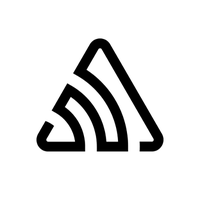Kore.ai provides integration for a built-in Sentry Bot that you can use to display message notifications and execute tasks directly from the Kore.ai application. To use the Sentry Bot, you just need to add the Bot to your Kore.ai account, and then configure the settings for the Bot, such as authentication to access Sentry, and the notification messages that you want. This topic describes the Sentry built-in Bot for Kore.ai. For more information about other Kore.ai Bots, see Adding Bots.
About the Kore.ai Bot for Sentry
 Sentry is an event logging platform primarily focused on capturing and aggregating exceptions.
Sentry is an event logging platform primarily focused on capturing and aggregating exceptions.
| Integration Type | Webhook – Connect to this Bot using a webhook integration where the web application pushes message notifications in near real time. |
| Category | Developer Tools – This Bot is available in the Kore.ai application in the Developer Tools category. |
Configuring Sentry
To configure a Sentry webhook for Kore.ai, you must have a Sentry account with administrator access as well as API access to configure a webhook. If you don’t, you’ll need to contact theSentry system administrator for your company. For more information, see the Membership in the Sentry documentation.
To get started configuring the webhook in Sentry, you’ll need two things:
- The Kore.ai webhook URL provided when you set up an alert in your Kore.ai account for each alert that you want to enable in Sentry.
- A valid Username and Password for an account with Sentry API access.
The webhook URL is account-specific and cannot be transferred to any other account. This means that if you configure a Sentry webhook using a test account, you will have to recreate the alert and get a new webhook URL to configure in Sentry. The following URL is an example webhook URL.
https://app.kore.com/hooks/c6089802f36250c179dcb1aa29afd24c
Configuring Webhook
This procedure describes the steps in Sentry to configure a webhook using a Kore.ai webhook URL endpoint.
- Log on to Sentry, and then on the top menu bar, select your organization. The Dashboard page for your organization is displayed.
- On the left navigation menu, click Projects, and then on Your Teams tab, click the project that you want to add a webhook to. The < Your Team Name > / < Your Project Name> page is displayed.
- On the top menu bar, click Settings. The Project Settings page is displayed.
- On the left navigation menu, in the INTEGRATIONS section, click Webhooks. The WebHooks page is displayed.
- In the Callback URLs field, enter the Kore.ai webhook URL for the alert.
- Click Save Changes to save the webhook configuration.
- On the left navigation menu, click Rules. The Rules page is displayed.
- Create one or more rules that trigger an alert, and then in the Take these actions section, select Send a notification via {service} option.
- In the Send a notification via field, select Webhooks, and then click Save Rule.
For more information, see Notifications in the Sentry documentation.
You can setup message notifications to your Kore.ai account using a Sentry webhook. Click ![]() , click Get notified when…, click Error Notifications, and then in the Setup Task dialog:
, click Get notified when…, click Error Notifications, and then in the Setup Task dialog:
- click the Activate button to generate a Webhook URL.
- copy and save the URL, or click Email Instructions to send the URL to an email account. For more information, see Configuring Sentry Webhooks.
- optionally customize the Task Name
- optionally customize the Short Description
- enable or disable Mute task notifications.
Next Steps
After the webhook is configured in Sentry, when any of the events occur in Sentry, a message is displayed on the Bots tab in the Messages section for the Kore.ai account.
